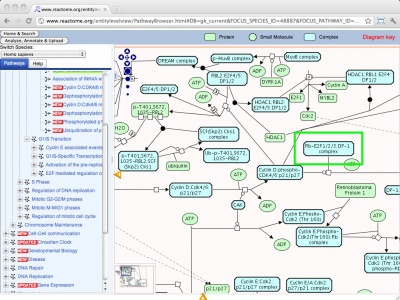WWW Reactome
Jump to navigation
Jump to search
Reactome |
URL
Abstract
Reactome is a multi-site collaboration to develop an open source, curated bioinformatics database of human pathways and reactions. It includes annotations, pathways and tools for pathway browsing and analysis, including pathway assignment and overrepresentation analysis of user-supplied data sets. Making use of orthology prediction, Reactome also provides cross-species pathway inference for a large number of model organisms. The URL accesses the E2F mediated regulation of DNA replication.
Reference
| Croft et al. (2011) Reactome: a database of reactions, pathways and biological processes. Nucleic Acids Res 39:D691-7. (pmid: 21067998) |
